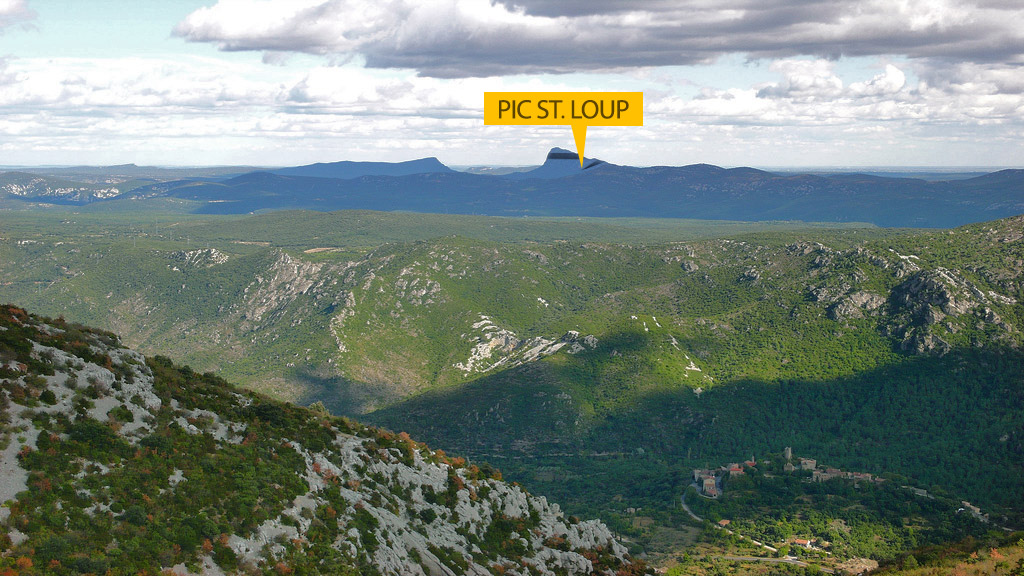What is Languedoc Roussillon famous for? For wine enthusiasts on a budget, Languedoc-Roussillon is known as a great value wine region. So what do you need to know?

What is Languedoc Roussillon famous for?
- Caving & Camping
- Beautiful French-Roman villages
- The Pyrenees
- Epic driving roads & tunnels
And, of course, great wine. For wine enthusiasts on a budget, Languedoc-Roussillon is becoming known as a great value wine region. So what do you need to know about The Languedoc (“LONG-eh-DOCK”) to get great wine?
Here is a helpful (and inspiring) guide that was outlined by a Languedoc-Roussillon local, Julien Vaché. Learn what types of wines to look for and, if you visit, where you should travel for a wine country vacation.
Languedoc-Roussillon Wine Guide
Major Types of Wine
It’s all about blends. In the Languedoc, vineyards are often called ‘patchwork’ because so many different grape varieties grow together. Most producers make blends instead of single varietal wines. Red blends from Languedoc Roussillon tend to be more full-bodied and fruit driven.
Need a recommendation? Look below.
- Red Wine
- Rich full-bodied red wines with Syrah, Grenache, Carignan and Mourvedre as major components.
- White Wine
- Unoaked zesty white wines made mostly with Picpoul and Grenache Blanc. Step aside Pinot Grigio.
- Rosé Wine
- Same varieties in reds and whites, but pink by design.
- Sparkling Wine
- Cremant de Limoux is supposedly older than Champagne; and a super value.
- Sweet Wine
- From white sweet wines of Muscat to Maury, a red fortified wine made of Grenache that lasts up to 100 years.

Languedoc Roussillon Wine Region Map
“The rules running each Appellation are archaic, obscure, political and not adapted to modern wine making and marketing…the region’s most famous winemakers do not bother with them”
Julien Vaché

Major Wine Regions in Languedoc Roussillon
During the 1970’s the Languedoc Roussillon was guilty of overproducing cheap jug wine. Old Grenache vineyards were ripped out and replaced with high-yield grape varieties such as Carignan. Since then, Languedoc Roussillon has slowly been recovering its status as a quality producer by reducing yields and going back to blending in more Grenache.
Don’t fret about the sub-appellations in the Languedoc when buying wine. Most wines are labeled under Coteaux du Languedoc & Vin de Pays
St. Chinian
Located in the middle of Languedoc Roussillon. A great many readily available wines of Saint Chinian use lighter varieties such as Carignan, Grenache and Cinsault.
Faugères
Located very close to Saint Chinian. Faugères is in the hills off the coast with a high percentage of schist soils; perfect for aromatic reds such as Grenache.
Picpoul de Pinet
A white wine appellation produced with the regional zesty white wine variety, Picpoul. Perfect with oysters.
Corbières
Fruity and juicy red wines use Carignan, Syrah and Grenache. Think easy going, like a mid-week Merlot.
Limoux and Blanquette de Limoux
Fantastic value-driven sparkling wines made in the same style as Champagne.
Languedoc-Roussillon Winery Map
I will simply highlight here some of my favourite “terroirs” and, within each, my favourite domains.
Julien Vaché, Best Wines from the Languedoc-Roussillon
View The Best Wines of the Languedoc-Roussillon in a larger map

Local Wine Expert
Julien Vaché is a wine lover and enthusiast. Born in the Languedoc, he is also a fan of the Bordeaux and Cotes-Du-Rhone regions.
He infrequently blogs about Travel, Food and Wine at julien.quora.com and maintains a set of map guides with restaurant and hotel recommendations on Google Maps.
